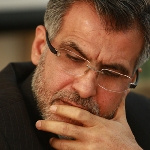Theorization of Violence in Afghanistan

In recent days, there were demonstrations in several Afghan cities such as Mazar-e Sharif, Jalalabad, Bamyan, Kabul, Herat, and others, in protest of the action taken by an American extremist preacher.
It is natural that the Afghan people would announce their protest against the insulting of Islamic sanctities. Therefore, the protests were predictable, and in the past Afghans had protested against anti-Islam actions in other countries. Afghans protested against offensive caricatures published in one of the European presses, and they protested against the insulting of the holy Koran in Guantanamo prison. When those insults were made, Afghans protested and demonstrated against the actions to show their feelings.
But I think what happened in Afghanistan in recent days can be investigated from several viewpoints, and be noted as such. The first issue is that the incident that happened in Mazar and the attacks on the UN office that caused a number of employees to be murdered showed that security in Afghanistan is like a pane of glass, which is extremely vulnerable. As most people know, Mazar is one of the Afghan regions where the first step of transferring security responsibilities to Afghan forces has been implemented. As such, in terms of grading security issues, Mazar-e Sharif was considered one of the more secure regions in Afghanistan. The occurrence of this event showed that the security situation, even in Mazar-e Sharif, is unstable. In this regard, we should mention the weak points among the security forces in Mazar-e Sharif, and consider them as one of the factors that caused this incident.
The second point to be noted is that the Afghan insurgent groups are trying to theorize violence in Afghanistan, namely, they attempt to explain violent struggle as a part of their social behavior and to use this weapon to achieve their goals. Thus, information about what happened in Mazar-e Sharif can confirm the behavior of the insurgent groups in that region of Afghanistan.
The third point is that these incidents showed that the Afghan insurgent groups can exploit social trends, and sometimes start quiet and social trends to exploit the flow. The point should also be added that, in any case, there is a permanent capacity in Afghanistan to always react against anti-Islamic measures, sometimes accompanied by aggressive behavior. As long as this potential exists in Afghanistan, we can suppose that the behavior will be predictable.
Finally, a point that should be mentioned is that when all of the incidents in recent days, such as the demonstrations held in various cities of Afghanistan, domination of rebel groups in one of the regions of Nuristan province, are put together, it can be said that the project to achieve reconciliation and peaceful understanding between the Afghan government and the rebel groups is not a simple matter, and all behavior of insurgent groups in recent weeks confirms that they have their own considerations about any agreement on peace in Afghanistan.
Thus, all of the developments that have occurred in recent days in Afghanistan show that insurgent groups will take every opportunity to put pressure on the Afghan government and some neutral international institutions, specifically the United Nations, to achieve their goals.

